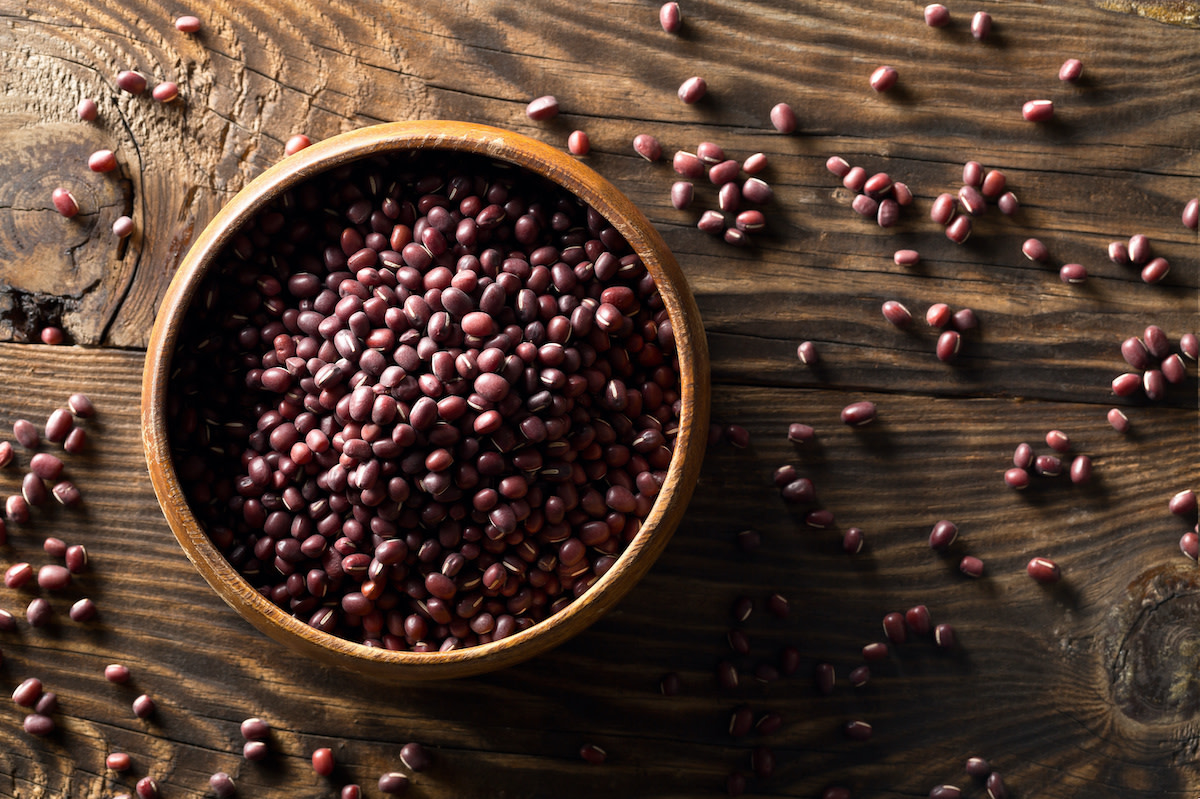How to Cook Adzuki Beans: 5 Ways to Eat Adzuki Beans
Written by MasterClass
Last updated: Jun 7, 2021 • 3 min read
Adzuki beans are grown in Asia and can be used in both sweet or savory dishes.
Learn From the Best
What Are Adzuki Beans?
Adzuki beans—also known as azuki beans, aduki beans, or red mung beans—are small legumes that have a nutty, sweet flavor. Adzuki beans are commonly known for being used in red bean paste. Adzuki beans are high in dietary fiber, potassium, folate, magnesium, and manganese, as well as B-vitamins and other nutrients. Adzuki beans are cultivated in East Asia and are common in Japanese, Korean, and Chinese cooking.
What Is the Difference Between Kidney Beans and Adzuki Beans?
Kidney beans and adzuki beans may appear similar at first glance because of their red color, but kidney beans are larger than adzuki beans. Both kidney beans and adzuki beans are sweet but adzuki beans are much sweeter, meaning they are typically used in desserts, while kidney beans are used in savory dishes.
5 Ways to Eat Adzuki Beans
Some culinary uses of adzuki beans include:
- 1. Red bean paste: Red bean paste is a staple of many Japanese treats, and is often added to sticky rice cakes, sweet buns, or ice cream. It is made from boiled adzuki beans, which are combined with sugar and ground into a paste. Desserts like dorayaki—a pancake sandwich filled with red bean paste—and daifuku—a mochi dessert filled with bean paste—are two popular dishes that use red bean paste.
- 2. Vegetarian curry: Adzuki beans can be used in a variety of vegan or vegetarian dishes for a savory meal. In curries, adzuki beans can be cooked with garlic, coconut milk, and other spices like cumin and chili powder to make a hearty, slightly sweet, and spicy dish.
- 3. Soups and stews: Adzuki beans can also work well in soups or stews for a sweet accent. They pair well in soups with root vegetables, like onions or sweet potatoes, or other beans, like lentils.
- 4. Boiled for tea: You can make tea from adzuki beans by roasting your beans, then boiling them in water. Add fruit peels, honey, or sugar for extra flavor and sweetness.
- 5. In a salad: Add adzuki beans to any number of salads—from bean salads to classic green salads—for a sweet accent. Toss the cooked and chilled adzuki beans with carrot matchsticks, green onions, celery, and a tangy dressing for a light lunch or dinner. You can also sprout them like regular mung bean sprouts to add a layer of crunch.
Is It Necessary to Soak Adzuki Beans?
Certain dried beans need to be soaked before they are cooked, but it’s entirely optional with adzuki beans. If you’re in a rush, you can boil the beans without soaking them. Soaking your beans for eight to twelve hours before cooking them results in a shorter cook time, and can give your beans a creamier texture when they’re cooked.
How to Cook Adzuki Beans
Before you cook adzuki beans, you need to prepare them to be cooked. Here is a quick guide on how to prep and cook your adzuki beans.
- 1. Rinse your beans. Use a strainer or colander to rinse your dried beans under cold water. Remove any debris, stones, or deformed beans from the mix, and thoroughly drain your beans afterward.
- 2. Soak your beans if you want to. Some people prefer to soak their adzuki beans before they cook them, but it is not necessary. If you want to soak your beans prior to cooking, submerge the beans in water in a pot, cover them, and let them soak for eight to twelve hours. Once they’re done soaking, drain them and rinse them multiple times.
- 3. Use a large enough pot. Fill a large pot with water, and pour your beans in. Make sure your beans are submerged in the water, keeping in mind that they may swell to three times their original size once cooked.
- 4. Cook the beans. Fill a pot of water, and bring it to a boil. After the water has started to boil, reduce the heat to a simmer, and continue cooking the beans for about 45 minutes. The adzuki beans will be ready once the beans are fork-tender.
Want to Learn More About Cooking?
Become a better chef with the MasterClass Annual Membership. Gain access to exclusive video lessons taught by the world’s best, including Niki Nakayama, Gabriela Cámara, Chef Thomas Keller, Yotam Ottolenghi, Dominique Ansel, Gordon Ramsay, Alice Waters, and more.
